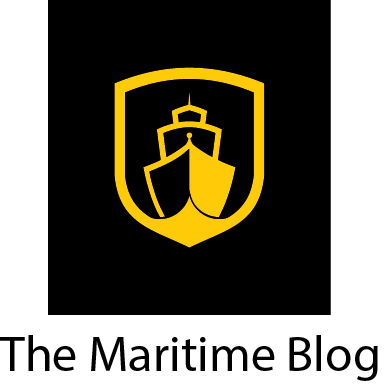
Also read:
https://www.ship-technology.com/features/featureis-there-a-future-for-hydrogen-powered-ship-propulsion-5731545/
Is there a future for hydrogen-powered ship propulsion?
Using hydrogen fuel cells as a means of eco-friendly ship propulsion is on the agenda of a growing number of tech leaders and shipping owners. But just how far could this trend go?

In January, the world’s political and business leaders gathered for the World Economic Forum in Davos. In one corner, thirteen companies, from a range of industries including energy and transport, thrashed out the details of an initiative that is being described as the first of its kind.
The Hydrogen Council, which features the likes of Honda, Hyundai, and Royal Dutch Shell, among others, is readying itself to sell the idea of hydrogen as a key participant in the climate change battle. The ambition is backed by a commitment to invest in the development and commercialisation of hydrogen and fuels cells.
The council has released the ‘How Hydrogen empowers the energy transition’ report in an attempt to back up its belief, with a warning that “the need for action is pressing”. Benoît Potier, CEO of Air Liquide – a council member – added in January: “Our call today to world leaders is to commit to hydrogen.”
In the maritime sector, action is being taken.
Hydrogen in the real world
Royal Caribbean made headlines in October when it announced it will use hydrogen fuel cell technology – which combines hydrogen and oxygen to produce electricity – as a means of additional power on their new liquefied natural gas (LNG)-powered Icon-class vessels, which are expected to be delivered in 2022 and 2024.
“Fuel cells do not burn anything to produce power,” said the company in a statement. “There are no emissions to harm the environment.” Tests will be carried out on an existing ship in the near future, but there are other, more immediate plans underway elsewhere.
Race for Water is a concept to use the power of the ocean, sun and wind as the sole sources of energy. The project is working with Swiss Hydrogen to build a demo solar-powered ship and revealed in November that it will install hydrogen stack prototypes, from PowerCell Sweden.
“We realised that whenever the ship had to move away from the sunbelt around the Equator, it would have to use its diesel generator for back-up power to generate electricity on board,” explains Swiss Hydrogen CEO Alexandre Closset.
This, he continues, would have been a “bit of a shame” and came to the conclusion that the team should “attempt the challenge of finding a different range extender, based on hydrogen”. Closset and the team are now finalising the last of the design elements, with April pencilled in for the first at-sea trials. “We expect the ship to be fully operational – with the full hydrogen system – this year,” adds Closset.
Another example can be found at Norway’s Fiskerstrand Holding AS, which wants to build a hydrogen-powered ferry. The vessel is part of a wider project, HYBRIDShips, that aims to improve awareness and knowledge of zero-emission propulsion systems. Fiskerstrand has set an ambitious goal of having the ferry ready by 2020.
Hydrogen also has political support in the form of an EU commitment to invest in a new fuel cell system for marine purposes, as part of the Fuel Cells and Hydrogen 2 Joint Undertaking, which is represented by the European Commission, Hydrogen Europe, and research groups.
But what about actual, tangible results? Last April, in the UK, a catamaran powered a hydrogen-powered internal combustion engine, which works by burning hydrogen, took eight hours to circumnavigate the tiny island of the Isle of Wight. The designer, Cheetah Marine, said at the time it was a mission to find the “fuel of the future”.
“The idea was part of a hydrogen car programme,” says Cheetah Marine’s Sean Strevens. “It was built to showcase the possibilities of hydrogen as an alternative green fuel. We had a great reaction locally, which shows that the public are keen to support new ideas on green energy and sustainability.”
Why hydrogen: benefits but also obstacles
Strevens neatly sums up the current status of hydrogen, for while there are examples of progress, much of the language is “could be” and a “long way to go”. There’s no doubting it is a burgeoning idea, but one that needs fleshing out into something more concrete.
This is where the likes of the International Maritime Organisation (IMO) come into it. The IMO has looked at fuel cells as part of its Carriage of Cargoes and Containers Sub-Committee, with a view to including safety provisions in the International Code of Safety for Ships using Gases or other Low- flashpoint Fuels (IGF) code.
This, alongside the announcement in Davos, is music to the ears of hydrogen enthusiasts. They see raising awareness of the benefits – a clean form of energy with no greenhouse gas emissions – as fundamental to their hopes. Closset explains: “Our ship demonstrates that hydrogen could be a feasible technology to at some point replace diesel fuel in the shipping industry.”
Bold, but also a long way off. “Replacing completely will take several decades,” Closset says. Nonetheless, he believes that it has transformed from a niche pet project to something altogether more mainstream. “It was always considered something that was very marginal and just for showcase purposes. Now we see that certification bodies, such as DNV GL, are starting to have their own rules on how you integrate hydrogen. That means there is demand.”
However, questions still remain. Are fuel cells really going to become the dominant form of power? What about the infrastructure to support widespread use? And, is hydrogen safe to store in large quantities?
“It is a fuel, therefore like any fuel it contains high levels of energy and should be treated with respect,” states Kris Hyde, technology development manager at ITM Power, a company that specialises in the manufacture of integrated hydrogen energy systems. “However, as engineers we have spent hundreds of years learning how to correctly design for compressed flammable gases.”
Closset agrees: “Handling hydrogen… it must be done in a very secure way. It’s a challenge to be able to clearly respond to every point given by a certification body, and at the same time integrate everything on the ship.”
Hyde believes the Hindenburg disaster, when in 1937 a hydrogen-filled airship burst into flames, killing 36 people, “scared a generation”, tarnishing hydrogen’s reputation for many years.
However, the aforementioned examples and the possibility of a $5m hydrogen fuelling station at the Port of San Francisco – reports suggest this is part of a plan for a zero-emissions ferry service and could be the first of its kind – demonstrate the necessary will to make the Hydrogen Council’s call to arms more than just words.


















